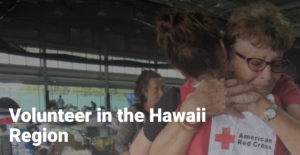The Powerpoint presentation that was given by Irvin Yoshino can be found on our website under ‘Useful Links – Documents’
The following notes were summarized by volunteer Helen Nakano: Given all of the deadly fires recently, Be Ready Manoa provided and had Fire Inspector Daryl Liu give a presentation that was most enlightening and very valuable!
Here are some of the highlights!
1. Don’t use water on a stove fire. Best way to extinguish a fire in the kitchen is to cover the pot or the frying pan etc.
2. Don’t use cell phone while getting gas for your car. Could ignite your cell phone.
3. Your solar panels will still be charging electricity even if the power in the house is dead. There is a disconnect wire attached to each panel.
4. New home builders are encouraged to install home sprinkler systems. They are triggered by heat so only that sprinkler will activate and water will be like a sprinkler directly over the fire instead of if the firemen come and “blast” the fire. Much less water damage. Even those of us whose homes are older might consider installing sprinklers depending on cost, location, etc.
5. The safety distance between homes is 50 feet. If your home is closer than 50 feet from your neighbors, the fire could leap over to your house. So, it does matter if your neighbors’ homes catch fire. Encourage them to call 739-8111 (program to install smoke alarms for vulnerable residents sponsored by the American Red Cross, Fire Department and retired electricians assn.) and get smoke alarms for their homes.
6. Lots of fires caused by overloaded extension cords. If you plan to use a generator to run your refrigerator, make sure you get a proper extension cord.
7. If you use an oxygen tank, BE careful not to place it anywhere near flammables.
8. Generators should be kept outside a garage or anywhere inside the house. As well as the fuel that is used.
9. Keep every door closed. I’ve been keeping laundry room and restroom open but I plan to keep those doors closed too.
10. SMOKE ALARMS – Should be checked monthly and batteries changed yearly. Recommend that every bedroom have a smoke alarm, even bedrooms that have been converted to offices.
CALL 739-8111 if you want to take advantage of the program sponsored by the American Red Cross, Fire Department and retired electricians assn. They will not only provide you with a smoke alarm for EVERY bedroom, but send volunteers to install them for you. At the same time, you might even ask for a fire inspection for your home. The American Red Cross want as many people to protect themselves with smoke alarms so call 739-8111 to get more information about the program and if you are eligible. If you have the means, the American Red Cross will welcome monetary donations or volunteer help (which requires background checks and training) for this very important program.
11. YOU HAVE TWO MINUTES TO GET OUT. It used to be that you had 15 minutes but now, with so much more synthetic materials being used, the fires burn more quickly.
The next workshop will be held on Thursday, August 22. Be Ready Manoa will be presenting “Emergency Water Distribution” from: 6:00 to 7:30 pm at the Manoa Innovation Center on Woodlawn Dr., mauka of the Woodlawn Bridge. Go to the Be Ready Manoa website for further info. Highly encourage residents to attend.












You must be logged in to post a comment.